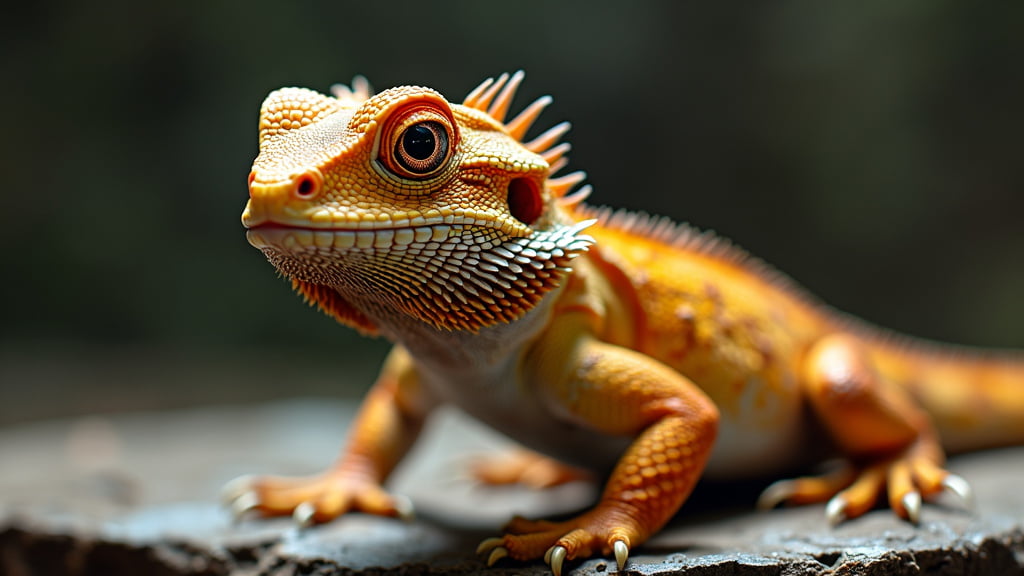Understanding Bearded Dragon Morph Health Issues
Bearded dragons are popular pets known for their unique appearance and friendly nature. However, when it comes to breeding these fascinating reptiles, morphs—bearded dragons with variations in colour, pattern, or scales—are often sought after by enthusiasts. While these morphs are undeniably beautiful, it’s essential to be aware of the health issues that can come with them. As someone who has owned many bearded dragon morphs over the years, I can share some insights into common health problems and how to manage them.
The Importance of Understanding Morph Health
Bearded dragon morphs can be stunning creatures. From the vivid colours of the leatherback to the striking patterns of the zero morph, the variety is impressive. But like all pets, these unique dragons come with their own set of health challenges. Understanding these issues can help you provide the best care for your morph and ensure it leads a healthy, happy life.
Common Morph Health Issues
1. Genetic Weakness
Certain morphs are more prone to genetic weaknesses due to selective breeding. This can lead to problems such as:
- Poor Immune Systems: Some morphs may have a weaker immune system, making them more susceptible to infections and diseases. Regular vet check-ups and a clean environment are vital.
- Lifespan: Some highly bred morphs may have a shorter lifespan compared to their wild-type counterparts.
I once had a beautiful translucent morph that, despite rigorous care, had a weaker immune system. Regular vet visits and a fortified diet helped to manage these issues, but it was a constant reminder of the importance of understanding morph-specific care needs.
2. Vision Problems
Morphs like the hypomelanistic and leucistic types can sometimes suffer from vision problems. Their lighter pigmentation can make them more sensitive to light, causing:
- Frequent Eye Irritations: Bright lights can lead to more frequent eye issues. Using UVB lighting appropriately and ensuring they have shaded areas can minimise these problems.
In my experience, adjusting the lighting setup to include cooler, shaded areas significantly improved my leucistic morph’s comfort and reduced eye issues.
3. Skin and Scale Problems
Some morphs, especially those with unique scaling like the leatherback or silkback, can have skin and scale problems.
- Shedding Issues: These morphs often experience difficulty shedding properly, which can lead to retained shed and infections.
- Skin Sensitivity: More delicate skin requires more careful handling to avoid injuries.
I’ve learned that regular baths and humidity control are key. My silkback bearded dragon thrived with weekly soaks that helped facilitate shedding and kept her skin healthy.
Preventative Measures
1. Diet and Nutrition
Proper diet is crucial for preventing many health issues. Ensure your bearded dragon receives:
- Balanced Diet: Including a variety of insects, vegetables, and supplements.
- Calcium and Vitamin D3: These are vital for bone health, especially in morphs prone to metabolic bone disease.
I always used calcium with D3 powder lightly sprinkled on my bearded dragons’ food to prevent deficiencies.
2. Proper Habitat
Creating a suitable habitat can prevent many common health problems. Key considerations include:
- Heating and Lighting: Ensure adequate UVB lighting and a thermal gradient within the terrarium.
- Substrate: Avoid loose substrates that can cause impaction. Reptile carpet or tile are safer options.
Mistakes in habitat setup can lead to significant health issues, so take the time to research and create an ideal environment for your morph.
When to See a Vet
Despite your best efforts, morph-specific health issues can still arise. It’s essential to know when to consult a veterinarian:
- Persistent Health Concerns: If your bearded dragon shows signs of illness that don’t improve with home care.
- Injuries: Particularly for morphs with delicate skin.
- Dietary Issues: If your dragon isn’t eating well or shows signs of nutritional deficiencies.
Regular vet check-ups are not just a precaution but a necessity to catch any potential issues early.
Conclusion
Owning a bearded dragon morph is a rewarding experience filled with the beauty and uniqueness of these fascinating reptiles. However, it’s important to understand the potential health issues that come with them to provide the best care. From genetic weaknesses to vision and skin problems, knowledge and preparation are your best tools.
Remember, the well-being of your pet should always come first, and regular vet visits can help mitigate many of the health issues associated with morphs.
For more detailed information on specific morphs and their care, you can check out our comprehensive guide on bearded dragon morphs. Additionally, if you’re looking for more general health tips, the Reptile Magazine Health Section offers excellent resources.
Meta Description for SEO: Learn about the health issues commonly associated with bearded dragon morphs. Discover tips on diet, habitat setup, and when to visit the vet to ensure your morph leads a healthy life.

